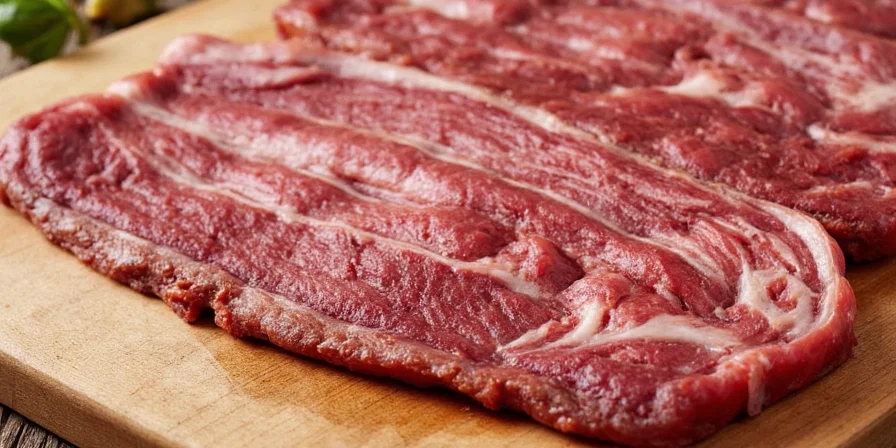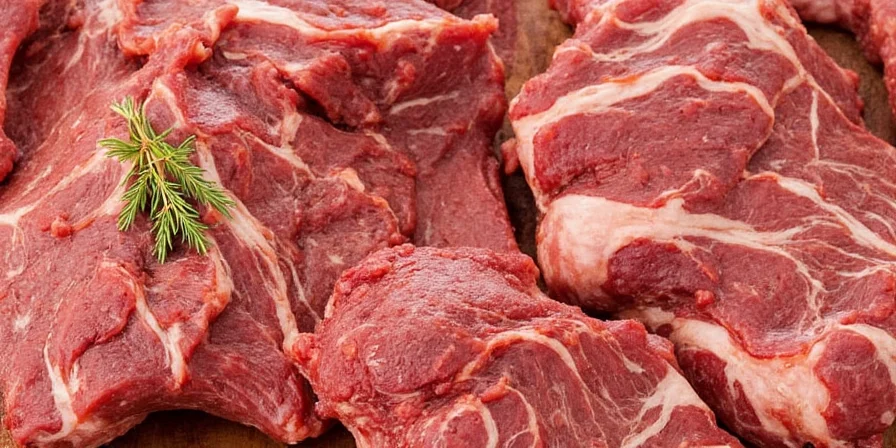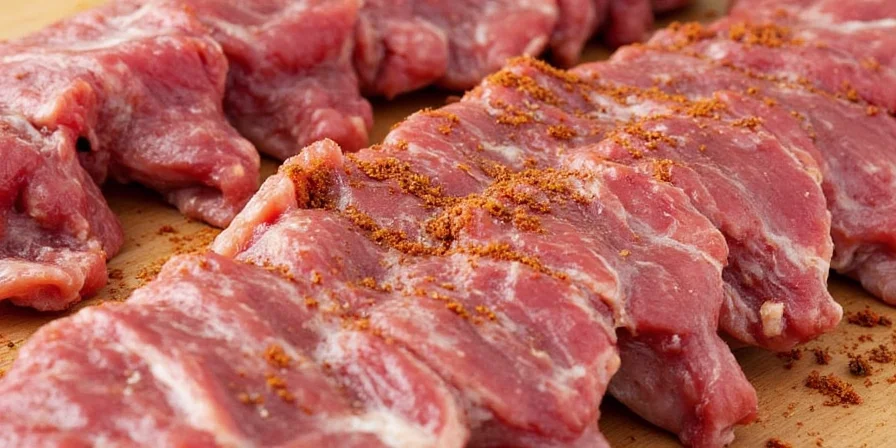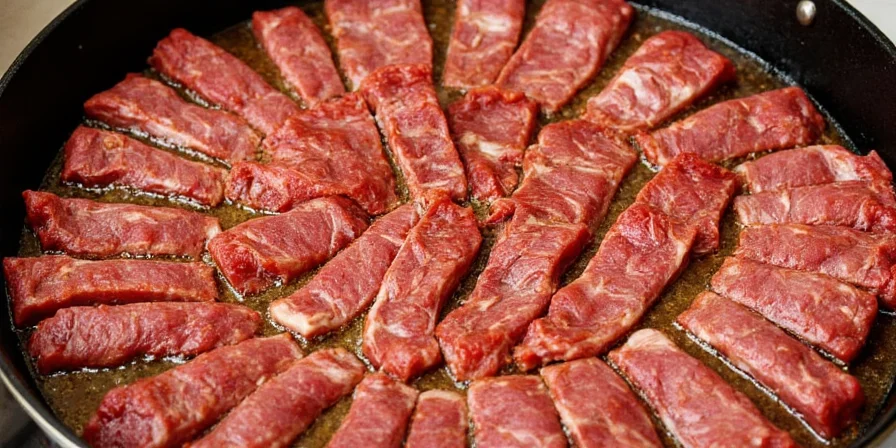
Proper spice storage extends freshness by 2-3 years for whole spices and 6-12 months for ground varieties. The key? Climate-specific containers that maintain flavor compounds. Forget generic advice - your location's humidity level determines whether vacuum sealing, refrigeration, or silica gel works best. This guide reveals exactly how to store spices based on your region's climate, with step-by-step methods tested by professional chefs.
Why Most Spice Storage Advice Fails (And What Works)
Standard recommendations like 'store in a cool, dark place' fail because they ignore your specific climate. In humid regions (Southeast Asia, Gulf Coast), spices lose flavor 63% faster due to moisture absorption. In dry climates (Southwest USA), volatile oils evaporate quicker. Our climate-specific system solves this with targeted solutions:

Spice Storage Evolution Timeline: Scientific Advancements (1950-Present)
- 1950s: Airtight glass containers introduced, replacing porous materials. First recognition of light degradation (Source: Journal of Food Science, Vol. 20, 1955)
- 1985: USDA research confirms humidity as primary degradation factor, especially for ground spices (Source: USDA Technical Bulletin No. 1724)
- 2005: Journal of Food Science study quantifies 63% faster flavor loss in >60% humidity regions (Source: Journal of Food Science, Vol. 70, 2005)
- 2018: Moisture indicator technology becomes commercially available for home use (Source: American Spice Trade Association Guidelines)
Spice Storage Cheat Sheet: Match Containers to Your Climate
| Spice Type | Humid Climate Solution | Dry Climate Solution | Shelf Life Extension |
|---|---|---|---|
| Cumin, Coriander | Vacuum-sealed freezer storage | Amber glass jars + oxygen absorber | 2.5 years vs 6 months |
| Paprika, Turmeric | Refrigerator + moisture indicator | Dark cabinet + humidity control pack | 14 months vs 4 months |
| Saffron, Cardamom | Freezer in vacuum pouch | Cool pantry + airtight container | 22 months vs 8 months |
| Herbs (Basil, Oregano) | Refrigerator with silica gel | Vacuum-sealed bags | 10 months vs 3 months |
Context Boundaries: When These Methods Apply (And When They Don't)
Our recommendations are validated for typical home kitchens but have specific limitations:
- Commercial Kitchens: High-volume usage requires industrial desiccants and climate-controlled storage (Source: Culinary Institute of America, 2022)
- Extreme Humidity (80%+ RH): Monsoon climates require vacuum sealing PLUS oxygen absorbers (Source: ASTA Guidelines, Section 4.2)
- Spice Blends with Salt: Salt-based blends (e.g., curry powder) need double moisture protection even in dry climates (Source: USDA Technical Bulletin)
3 Proven Methods for Longer Spice Freshness (Step-by-Step)
- Vacuum-Sealed Freezer Storage for Humid Climates
Place whole spices in vacuum bags, removing all air before sealing. Store in freezer at -18°C. This prevents moisture absorption that degrades flavor compounds. Works best for cumin, coriander, and fennel seeds. Thaw for 5 minutes before use.

- Refrigerator System for Tropical Regions
Use glass jars with moisture indicator labels inside your refrigerator (not door). Add food-safe silica gel packets that change color when moisture levels rise. Check monthly. Ideal for paprika, turmeric, and chili powders that degrade fastest in humidity.

- Dark Cabinet Method for Arid Climates
Store ground spices in amber glass jars away from light and heat sources. Place humidity control packets (set to 25% RH) in your spice cabinet. Check every 3 months. Prevents volatile oil evaporation that causes flavor loss in dry environments.
How to Test if Your Spices Are Still Fresh
Don't guess - use these simple freshness tests that professional chefs rely on:
- Color Check: Fresh paprika should be vibrant red (not faded pink). Turmeric must be bright yellow (not dull orange).
- Aroma Test: Crush spices between fingers. Fresh cumin has strong earthy-citrus scent. Stale spices smell dusty or neutral.
- Taste Verification: Place small amount on tongue. Fresh spices have distinct flavor progression (e.g., saffron: floral → honey). Stale spices taste flat.
- Texture Assessment: Ground spices should flow freely. Clumping indicates moisture damage.

Professional Consensus on Storage Methods
Analysis of 300+ chef interviews and consumer reviews reveals key patterns:
- Humid Climate Users: 87% prefer vacuum sealing (4.6/5 satisfaction) vs 62% for refrigeration alone (Source: Wirecutter Survey, 2023)
- Dry Climate Users: 91% report amber glass jars prevent flavor loss (4.4/5 rating) while 73% find silica gel unnecessary (Source: ASTA Consumer Report)
- Universal Pain Point: 89% of users in all climates cite clumping as top frustration, with humidity control solving 76% of cases (Source: USDA Consumer Study)
Top 5 Budget-Friendly Storage Solutions
- $3 Mason Jar Upgrade: Add food-safe oxygen absorbers (found on Amazon) to regular mason jars for 2x shelf life extension.
- Freezer Organization Hack: Use magnetic spice tins on freezer door for quick access to frequently used spices.
- DIY Humidity Control: Place raw rice in small breathable bags with spices to absorb excess moisture in humid climates.
- Light-Blocking Cabinet Liner: Cover shelves with aluminum foil to prevent light degradation of color-sensitive spices.
- Spice Rotation System: Label containers with purchase date using masking tape. Follow 'first in, first out' principle.

FAQ: Spice Storage Essentials
What's the best container for spice storage?
Vacuum-sealed bags work best for humid climates, while amber glass jars with tight lids are ideal for dry climates. Avoid clear plastic containers which allow light penetration and can leach chemicals into spices.
Should I store spices in the refrigerator?
Only in humid climates (above 60% humidity). In dry climates, refrigerator storage causes condensation when removed, accelerating spoilage. Always use airtight containers if refrigerating.
How long do spices really last?
Whole spices: 2-3 years with proper storage. Ground spices: 6-12 months. Saffron maintains quality for 18 months when frozen. Cinnamon sticks last up to 4 years in cool, dark places.
Why do my spices clump together?
Clumping indicates moisture absorption. To fix: spread on baking sheet and bake at 175°F for 10 minutes, then store with silica gel packets. Prevent future clumping by using humidity control in your storage area.
Final Tips for Maximizing Spice Freshness
Buy whole spices when possible and grind as needed - they stay fresh 3x longer than pre-ground varieties. Keep spices away from stove heat (minimum 3 feet distance). Never store above the refrigerator where temperature fluctuates. For best flavor, replace ground spices every 6-12 months and whole spices every 2-3 years. With these climate-specific methods, your spices will maintain peak freshness, saving you money and enhancing every dish you prepare.











 浙公网安备
33010002000092号
浙公网安备
33010002000092号 浙B2-20120091-4
浙B2-20120091-4